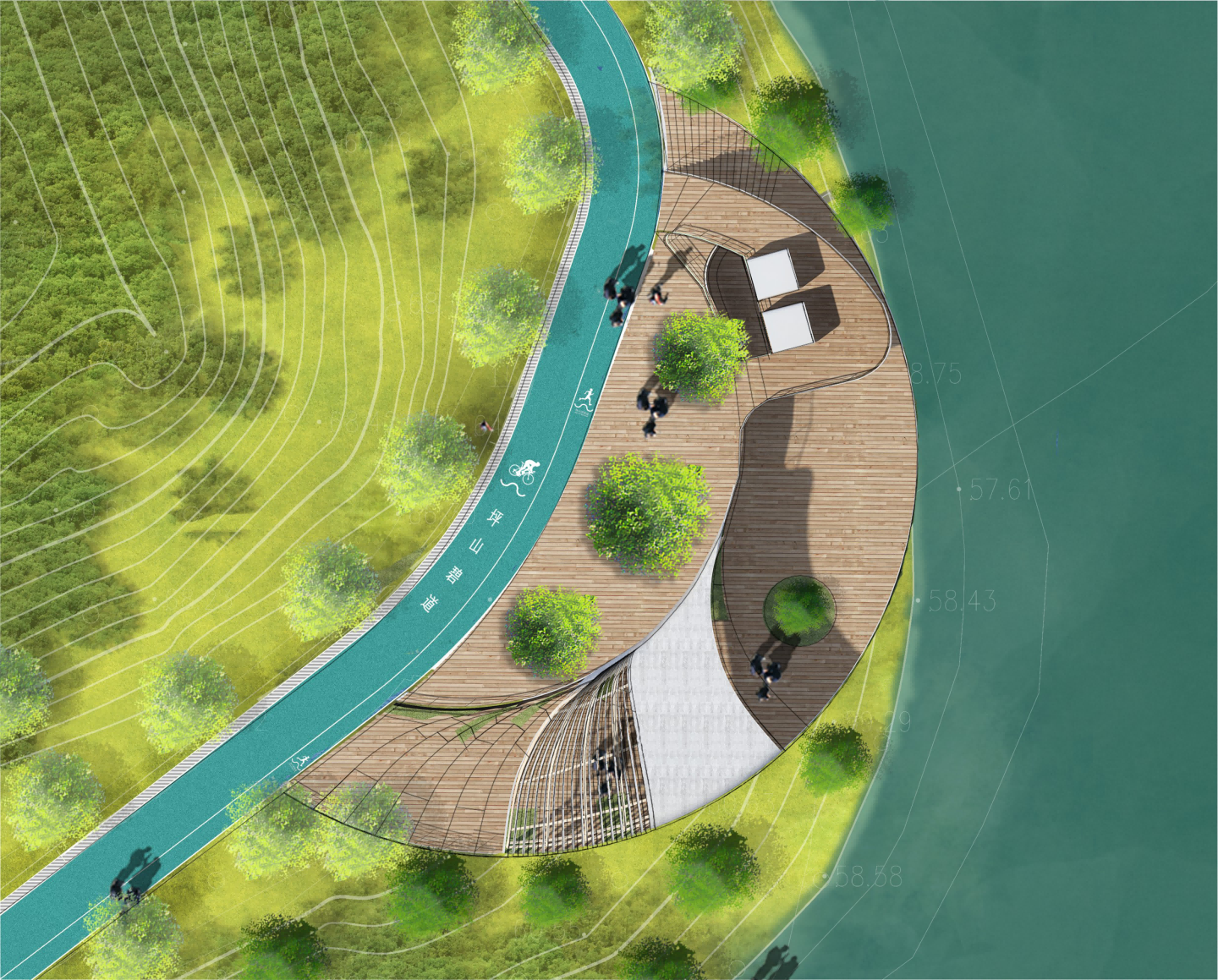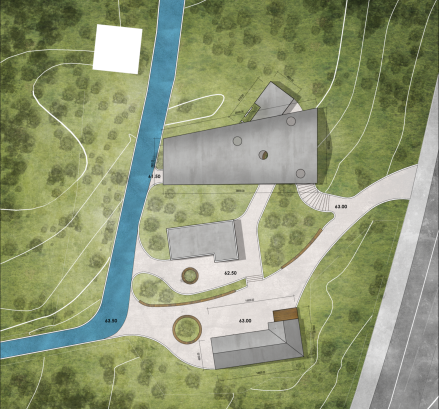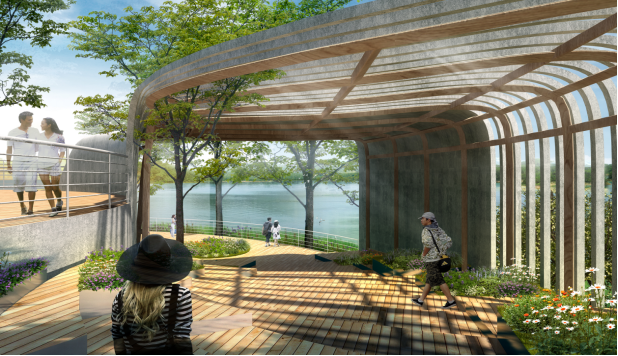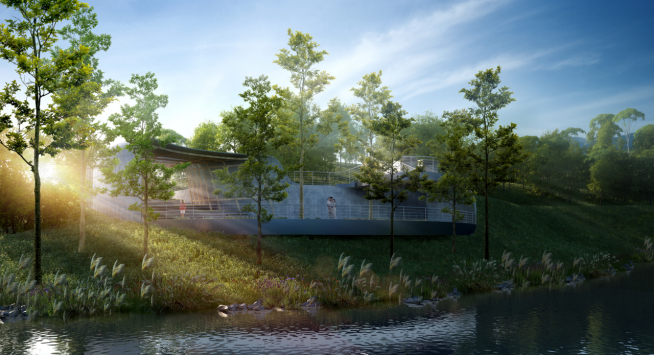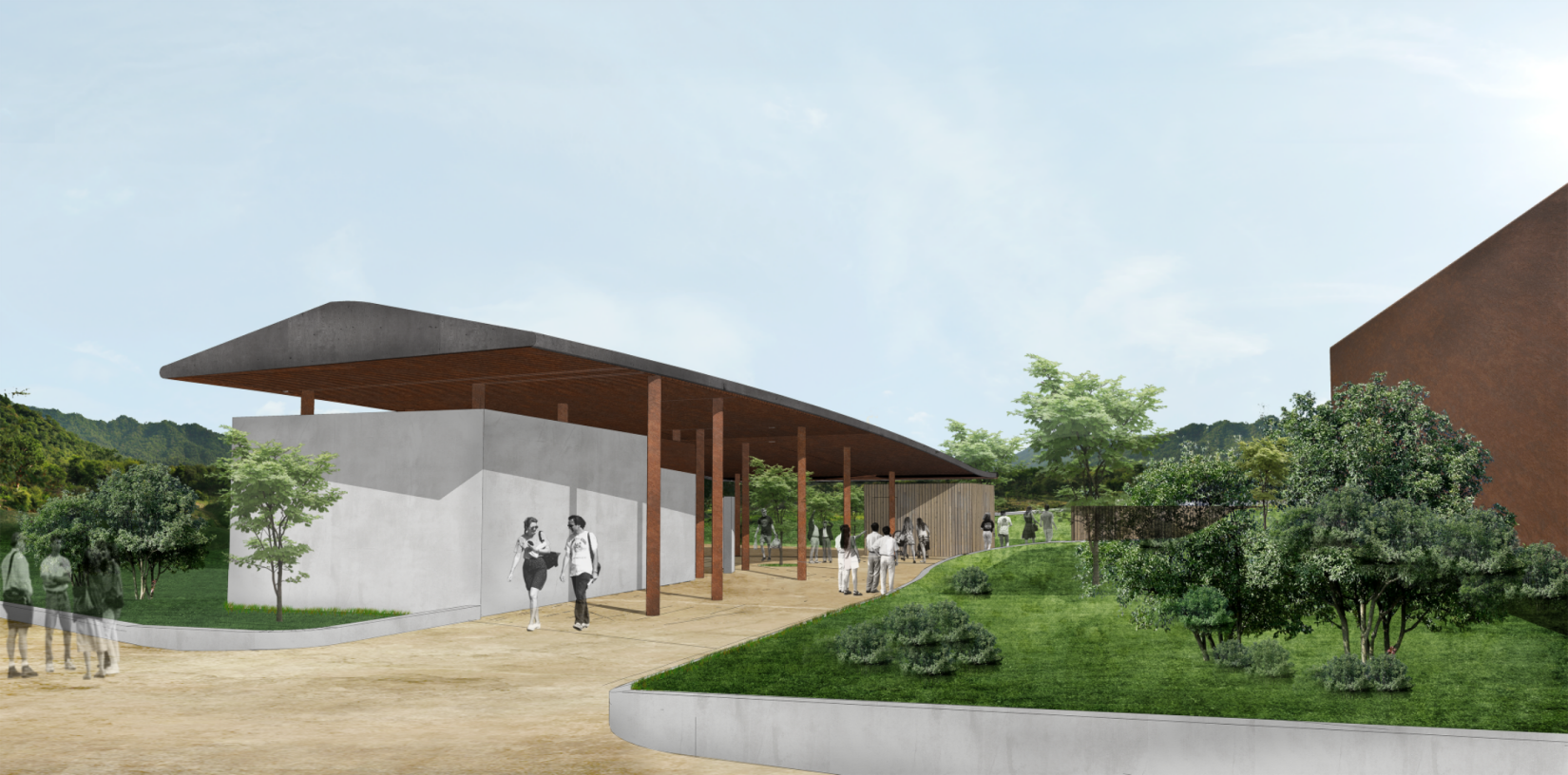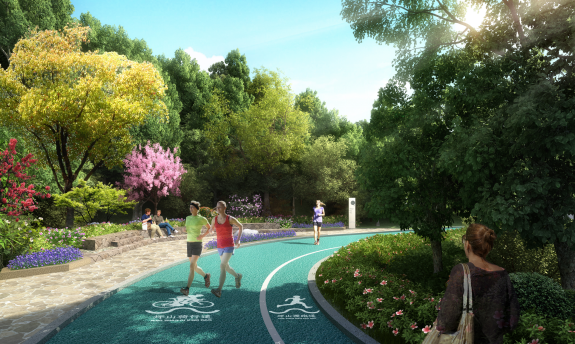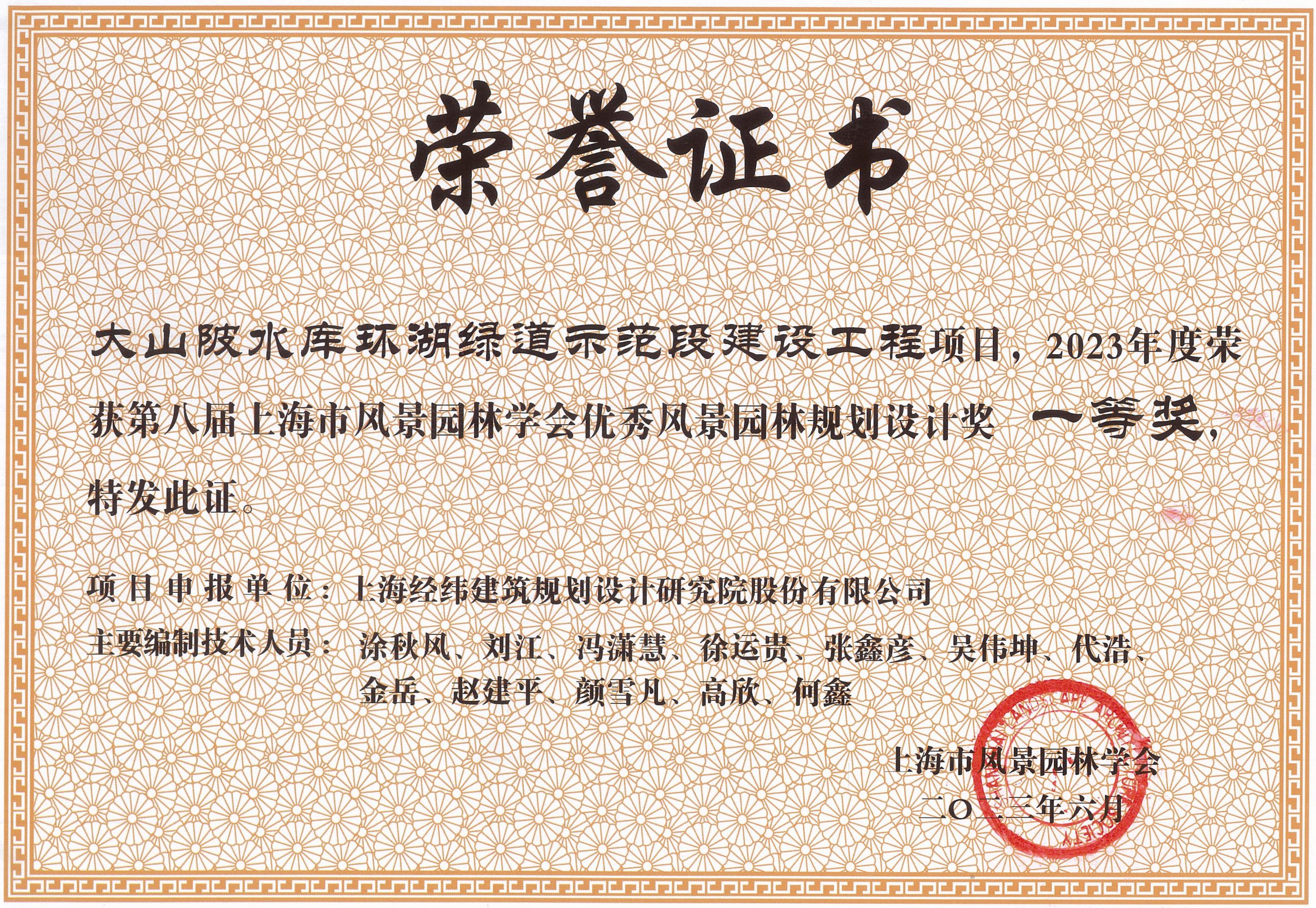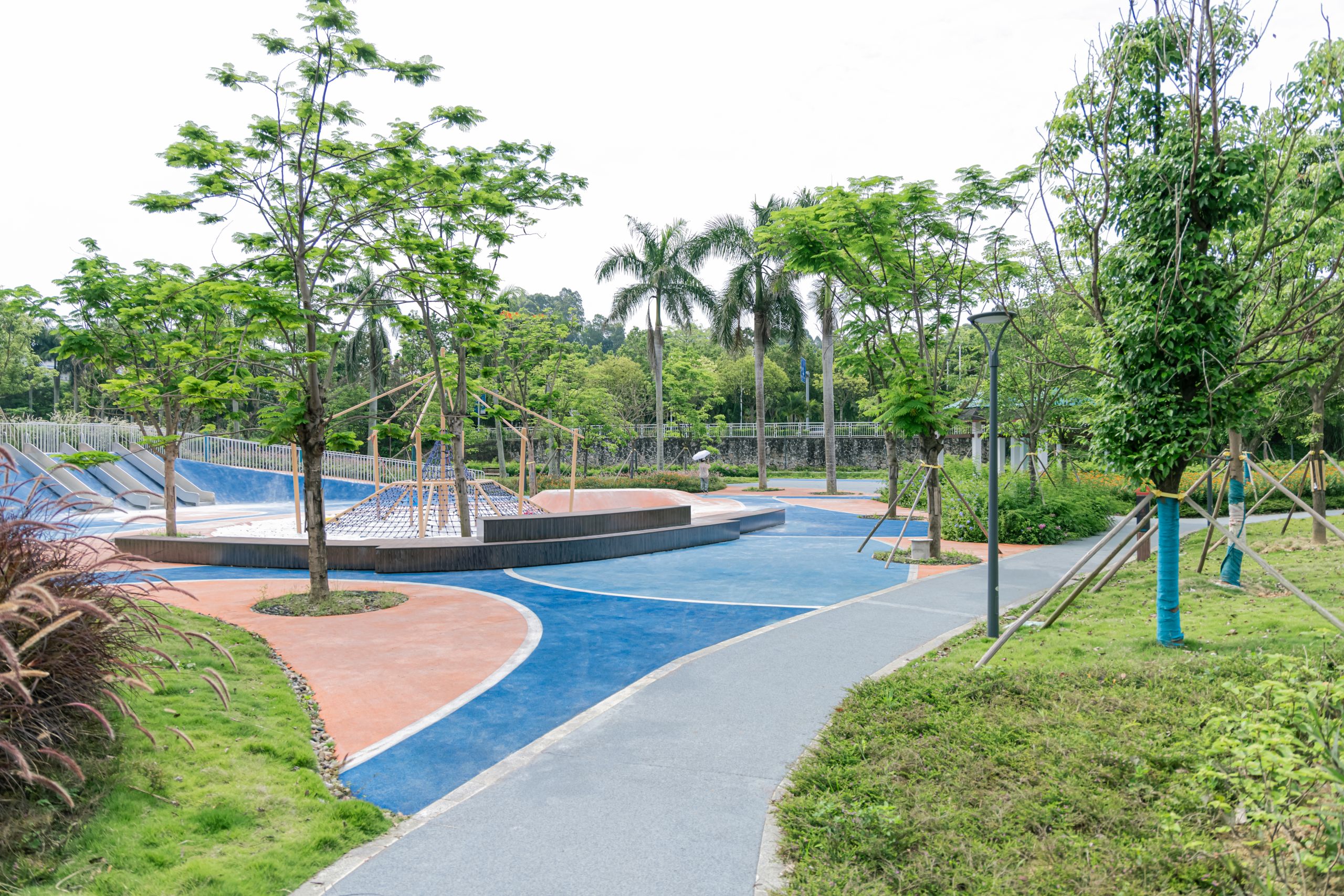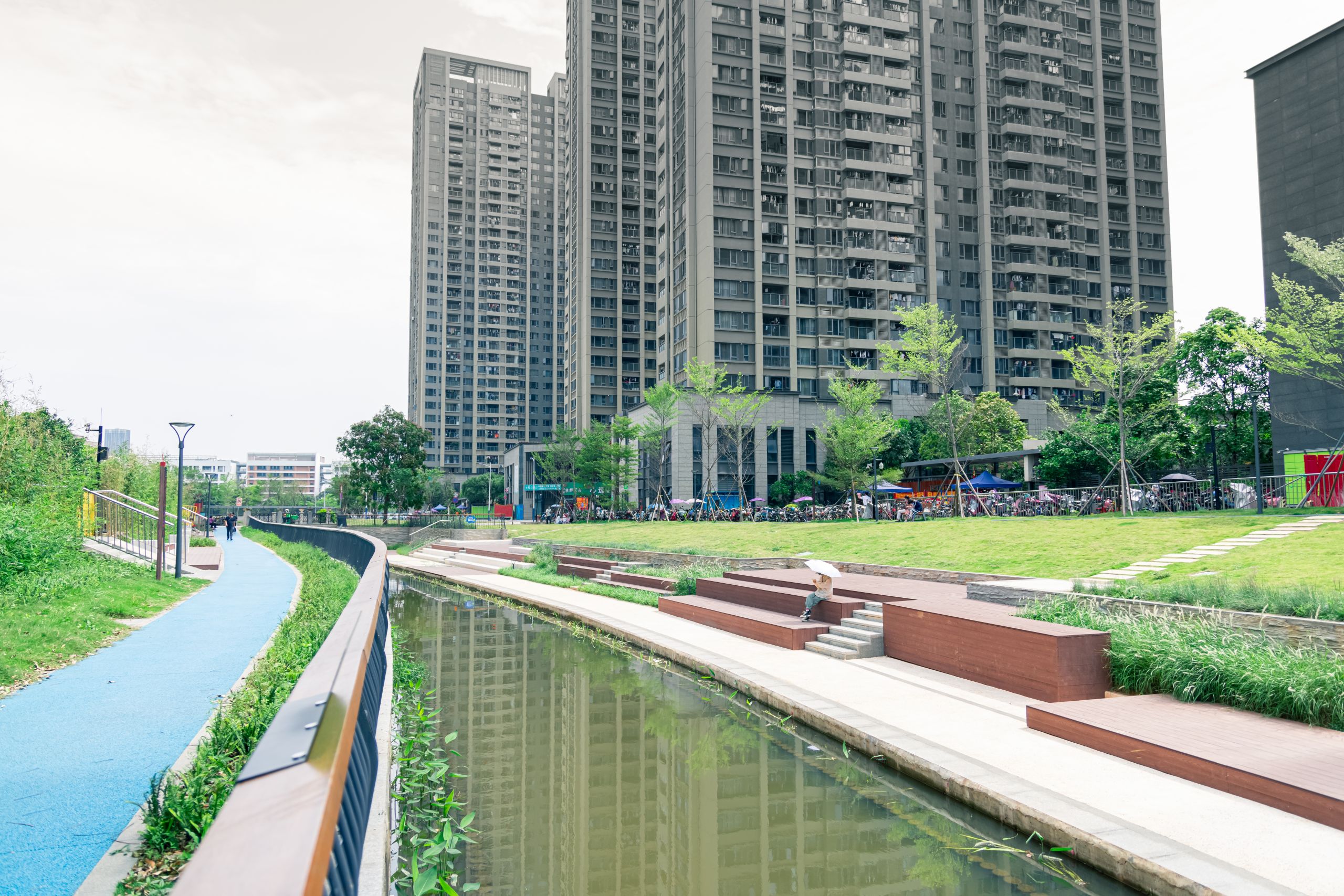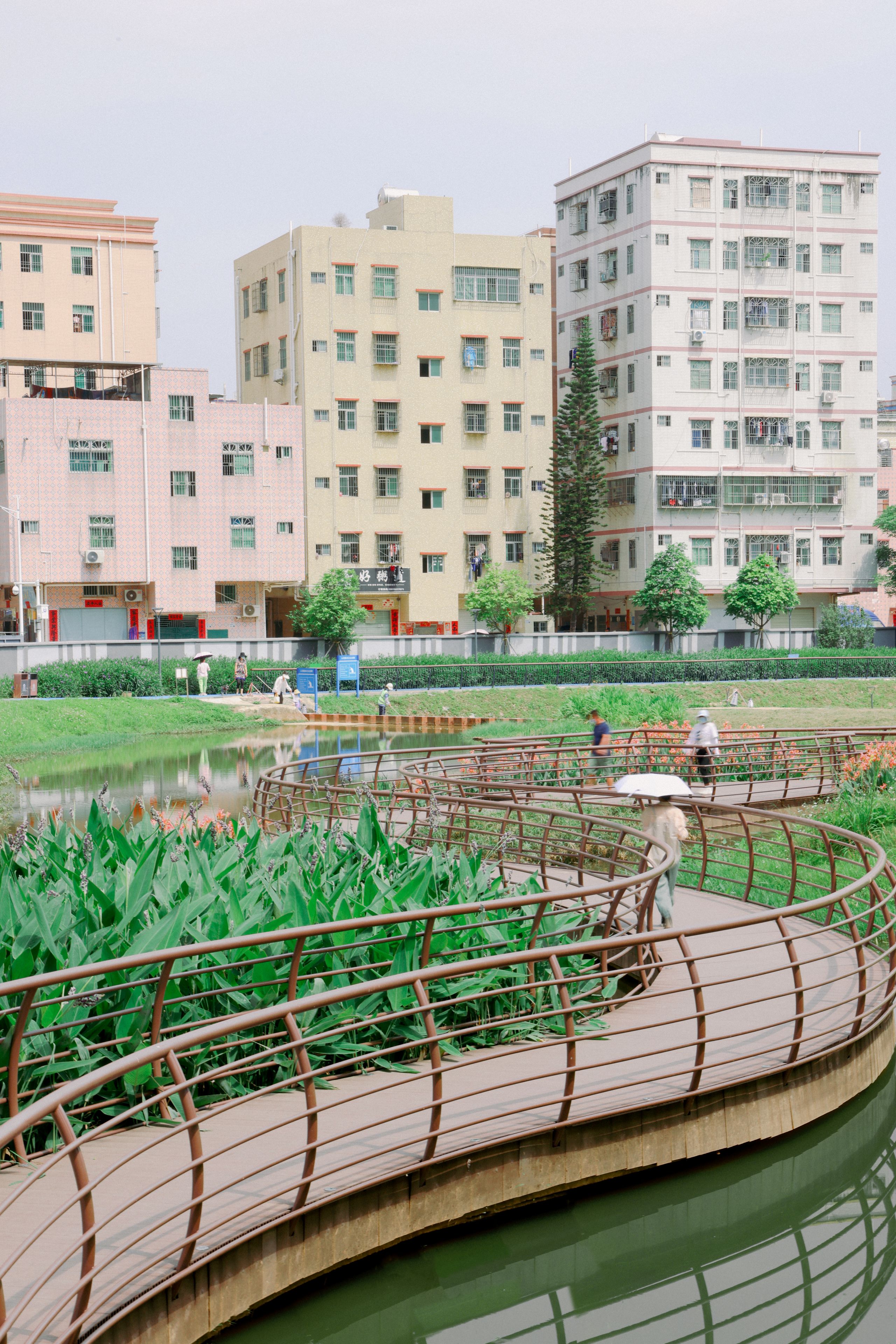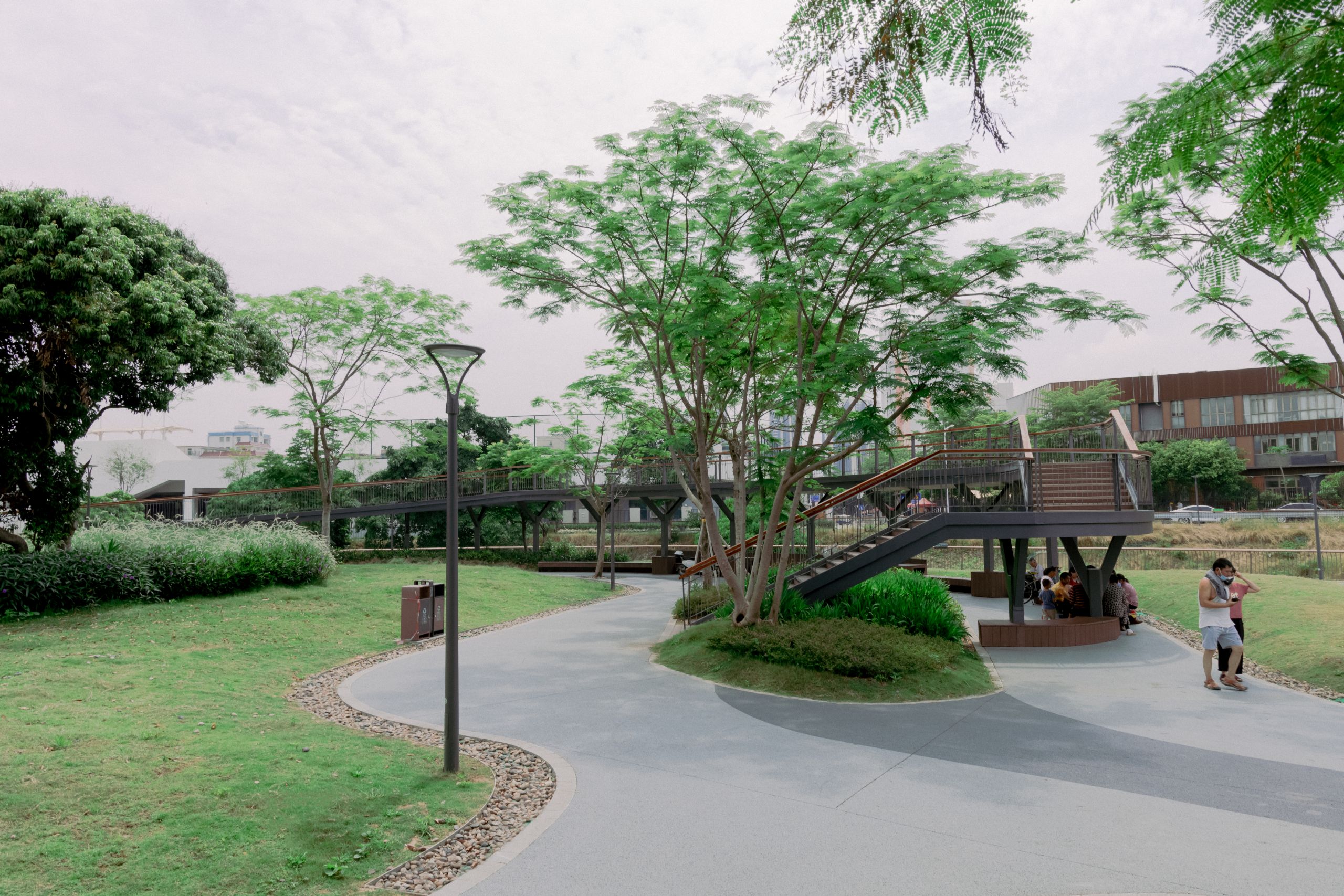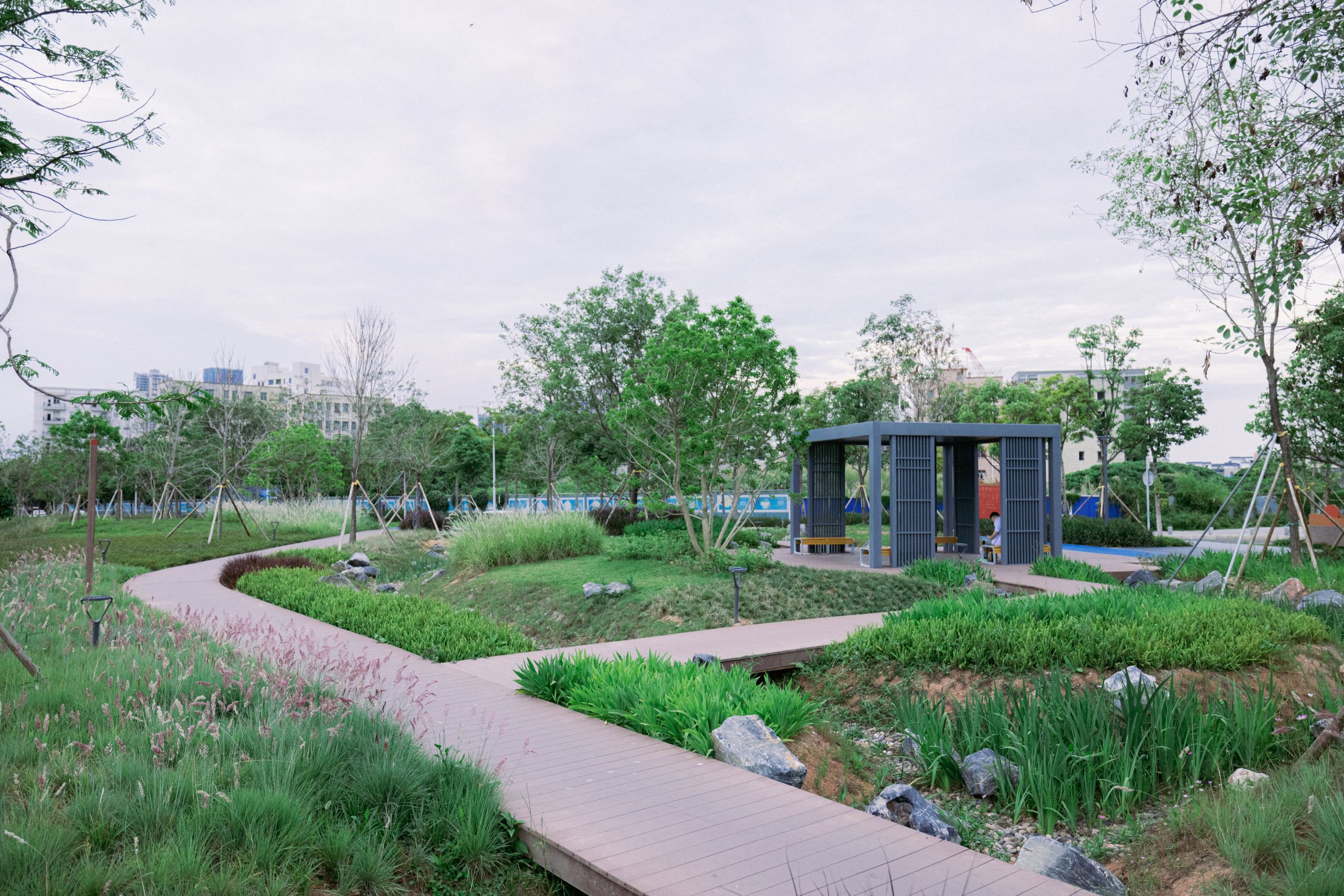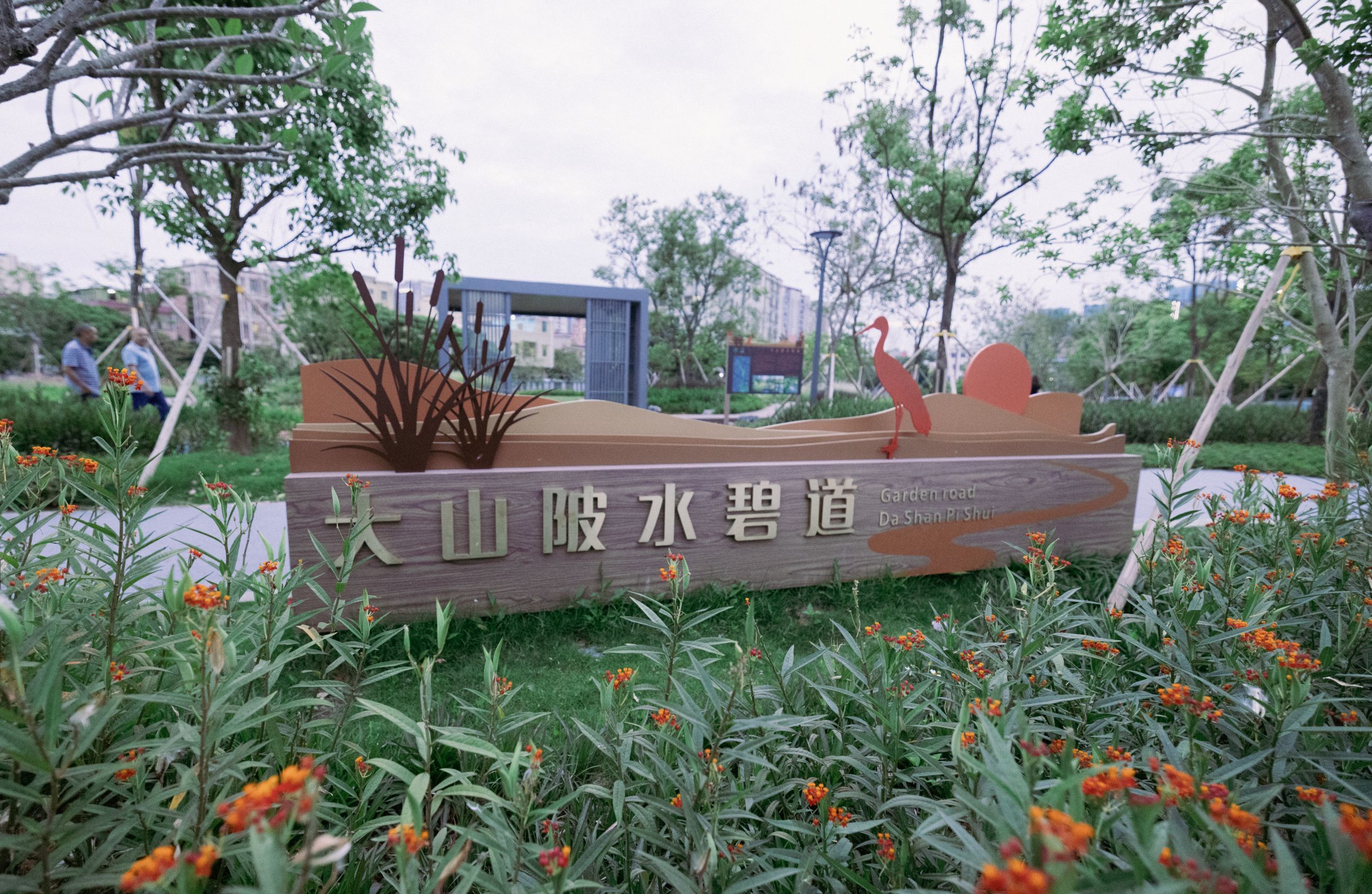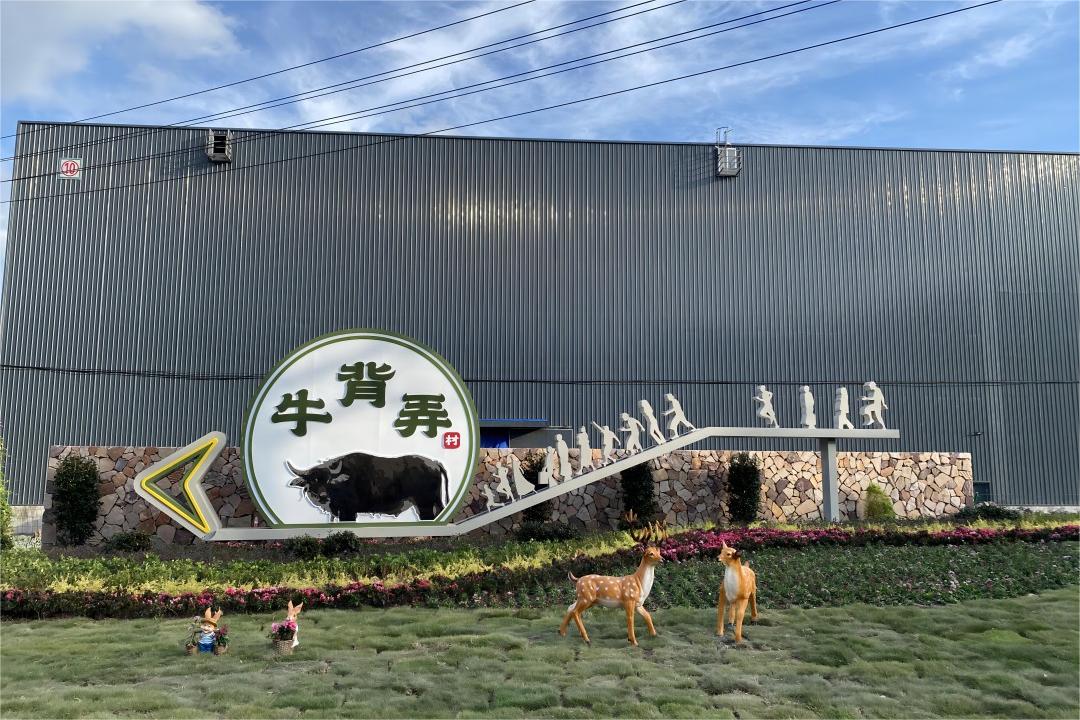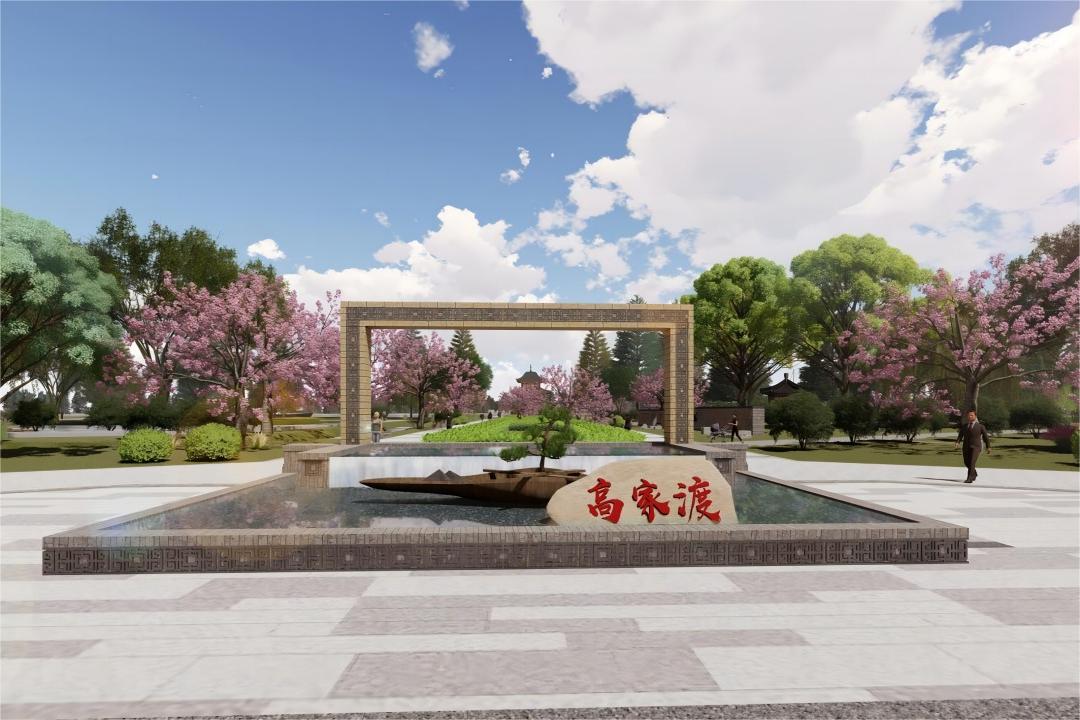Dashanpi Reservoir Lakeside Greenway Demonstration Section Construction Project
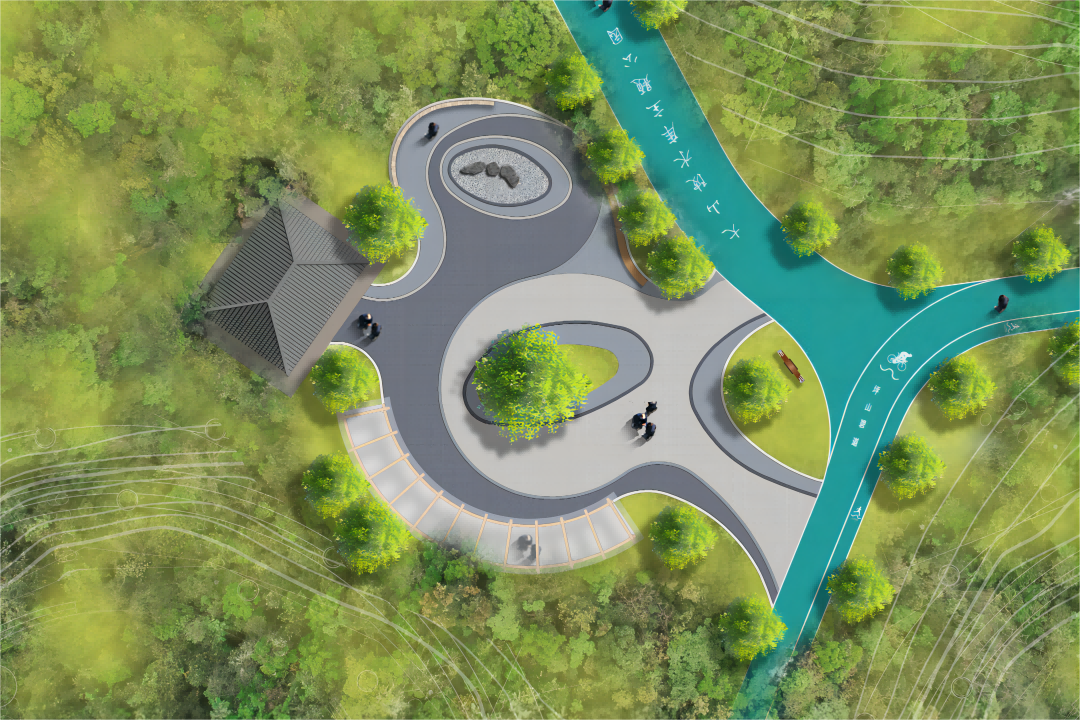
The total length of the Dashanbei Reservoir Greenway is about 6.8 kilometers. The project site is adjacent to the Pingshan District International Tennis Center and Pingshan District Sports Center in the northwest, the Pingshan District Art Sculpture Creative Park in the north, and the Maluanshan Country Park and Litchi Park in the southeast. With the theme of "oxygen-rich slow life", the Happy Pingshan Loop Road is constructed to construct a one-ring and multi-point landscape structure of "green chain beads, beads are colorful", connecting: green beads - forest rest space, blue beads - waterside activity space, red beads - socialist core values cultural display space, yellow beads - existing scenic spot space, creating a forest walk, cycling, running, sightseeing and leisure, and oxygen supply for Pingshan citizens.
[Project Highlights]
1. Low interference, high restoration of landscape features
Low interference is mainly reflected in:
1.1 Utilization of basic roadbed and existing line type - the total length of the overall road reconstruction is about 6.800 km, of which the existing road surface layer in the reservoir area is about 5260 m, the municipal road is about 1100 m, and the new greenway is 420 m. The renovation method is to lay blue-green asphalt concrete pavement on the existing cement surface of the road to improve the comfort of the greenway, and at the same time, distinguish the pedestrian path from the cycling path by marking to increase the safety of the greenway;
1.2 Maintain and protect the original vegetation on both sides of the mountain - facing the natural mountain, there is no artificial ground cover decoration on both sides of the road, and the road is presented with the power of nature before the renovation; the line shape and width of the road are based on the terrain, and the excavation is not based on the standard road section;
1.3 Utilize existing node sites and facilities - based on the design orientation of function over beauty and applicability over appearance, the site maintains the original mountain, water, forest, and road style before and after construction, and the design traces are hidden, which can be said to be a design adapted to local conditions.
7 existing nodes are retained, 3 are lightly renovated, and 3 new nodes are built;
2. The finishing touch of low investment and high effect
The project scale of this project is 4.2 hectares, and the total length of the greenway is 6.8 kilometers. The main construction contents include greening project--6%, node facilities--15%; road engineering--55%, lighting engineering--17%, signage engineering--7%, etc. The total investment of the project is 18.3376 million yuan, of which the construction engineering fee is 15.6310 million yuan. In addition to the main project of the greenway, the improvement and upgrading of environmental facilities have achieved the effect of low investment (accounting for 15%) and high utilization rate. According to the feedback from the citizen use survey, the new node facilities have the highest utilization efficiency, reasonable site selection, accurate positioning, and are welcomed by the citizens of Shenshou.
3. Environmental protection features of low maintenance and high utilization
The design of this project aims to connect the greenway system around the reservoir, improve the existing environment and facilities, and moderately add greenway service stations, so as to provide a technical route for the construction of low-carbon cities and low-impact development in Pingshan District, and provide a demonstrative engineering case for the coordinated development of the economy, society and environment in Pingshan District and the construction of ecological livability.
Low maintenance means low labor, low energy consumption and low loss. Low labor - low labor input in the later stage, reducing a lot of daily labor such as pruning, watering, and maintenance; low energy consumption - avoid water-consuming, power-consuming, and energy-consuming facility designs; low loss - avoid frequent damage and replacement of facilities. High utilization, that is, high durability and high replacement. The elements of the landscape environment, such as lamps and signs, can remain durable; vegetation and facilities can be replaced by similar materials, reducing the difficulty of later maintenance and achieving the goals of easy cleaning, easy maintenance, and easy transformation.
[Project Highlights]
1. Low interference, high restoration of landscape features
Low interference is mainly reflected in:
1.1 Utilization of basic roadbed and existing line type - the total length of the overall road reconstruction is about 6.800 km, of which the existing road surface layer in the reservoir area is about 5260 m, the municipal road is about 1100 m, and the new greenway is 420 m. The renovation method is to lay blue-green asphalt concrete pavement on the existing cement surface of the road to improve the comfort of the greenway, and at the same time, distinguish the pedestrian path from the cycling path by marking to increase the safety of the greenway;
1.2 Maintain and protect the original vegetation on both sides of the mountain - facing the natural mountain, there is no artificial ground cover decoration on both sides of the road, and the road is presented with the power of nature before the renovation; the line shape and width of the road are based on the terrain, and the excavation is not based on the standard road section;
1.3 Utilize existing node sites and facilities - based on the design orientation of function over beauty and applicability over appearance, the site maintains the original mountain, water, forest, and road style before and after construction, and the design traces are hidden, which can be said to be a design adapted to local conditions.
7 existing nodes are retained, 3 are lightly renovated, and 3 new nodes are built;
2. The finishing touch of low investment and high effect
The project scale of this project is 4.2 hectares, and the total length of the greenway is 6.8 kilometers. The main construction contents include greening project--6%, node facilities--15%; road engineering--55%, lighting engineering--17%, signage engineering--7%, etc. The total investment of the project is 18.3376 million yuan, of which the construction engineering fee is 15.6310 million yuan. In addition to the main project of the greenway, the improvement and upgrading of environmental facilities have achieved the effect of low investment (accounting for 15%) and high utilization rate. According to the feedback from the citizen use survey, the new node facilities have the highest utilization efficiency, reasonable site selection, accurate positioning, and are welcomed by the citizens of Shenshou.
3. Environmental protection features of low maintenance and high utilization
The design of this project aims to connect the greenway system around the reservoir, improve the existing environment and facilities, and moderately add greenway service stations, so as to provide a technical route for the construction of low-carbon cities and low-impact development in Pingshan District, and provide a demonstrative engineering case for the coordinated development of the economy, society and environment in Pingshan District and the construction of ecological livability.
Low maintenance means low labor, low energy consumption and low loss. Low labor - low labor input in the later stage, reducing a lot of daily labor such as pruning, watering, and maintenance; low energy consumption - avoid water-consuming, power-consuming, and energy-consuming facility designs; low loss - avoid frequent damage and replacement of facilities. High utilization, that is, high durability and high replacement. The elements of the landscape environment, such as lamps and signs, can remain durable; vegetation and facilities can be replaced by similar materials, reducing the difficulty of later maintenance and achieving the goals of easy cleaning, easy maintenance, and easy transformation.
Related projects







